We left off on Day 3, already overwhelmed with wonderful instruments.
After lunch (another several-course affair), Franco had arranged for our most special trip yet – a private appointment to inspect the original Gazzo harp guitar of Pasquale Taraffo, residing at the Paganini Conservatory of Music.
I’d like to especially thank the director, Patrizia Conti, for allowing us this rare opportunity.
The trip enabled us to answer many questions about Taraffo and his instrument(s), and of course, bring up a whole list of new ones!
Eventually, I’ll do a more in-depth report on the main site.
For now, enjoy these discoveries with us…
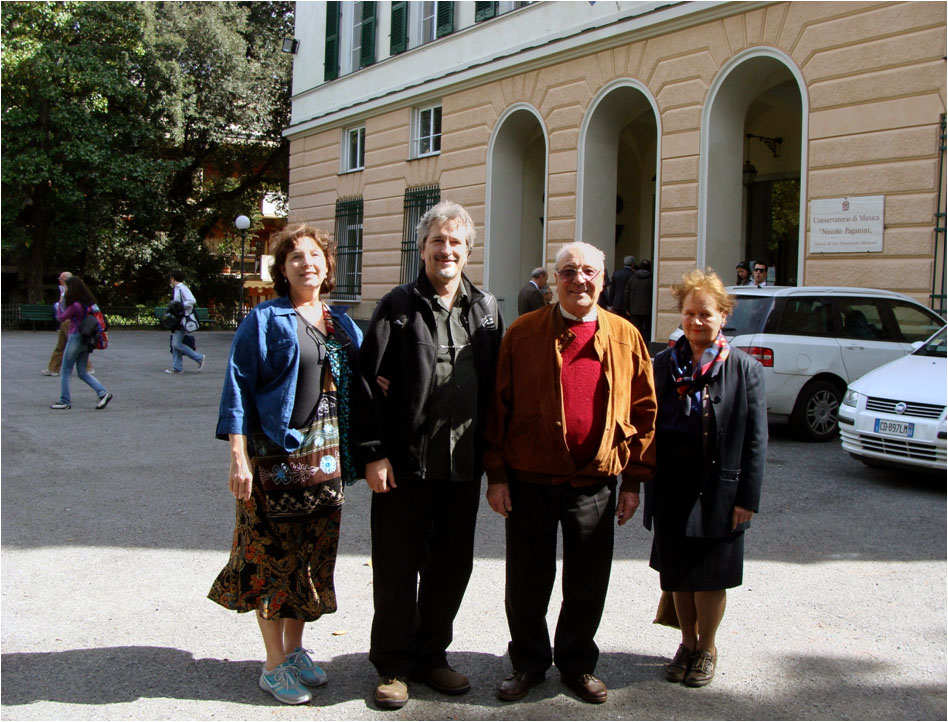
Outside the Paganini Institute
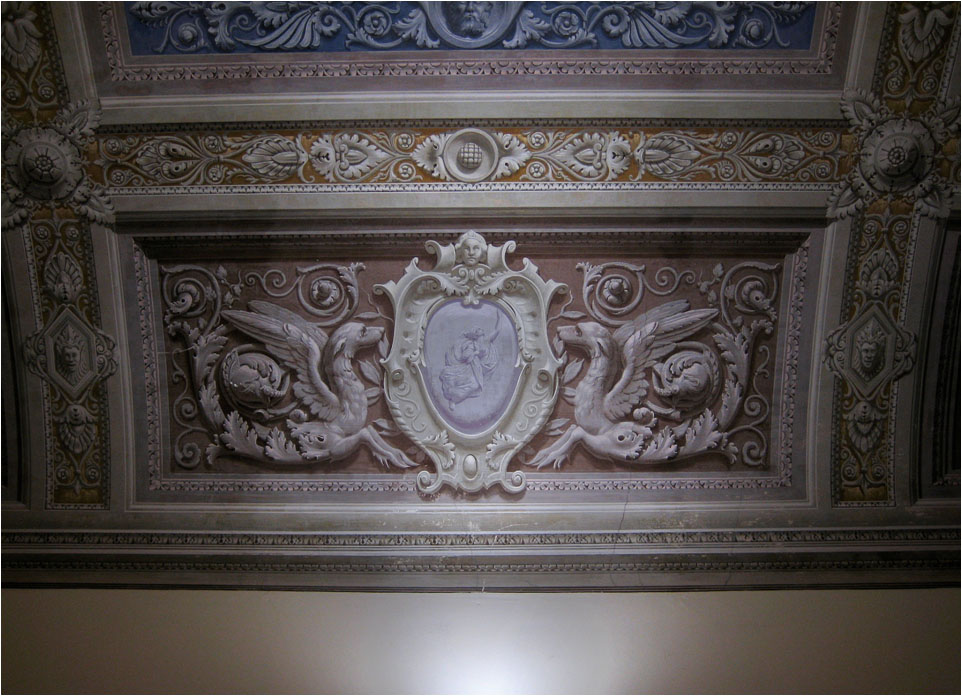
Inside the Director’s office, marveling at the renovated trompe-l’œil ceiling

The holy grail, unveiled.
I wasn’t able to obtain a tripod or lights, so please bear with the imperfect photos…
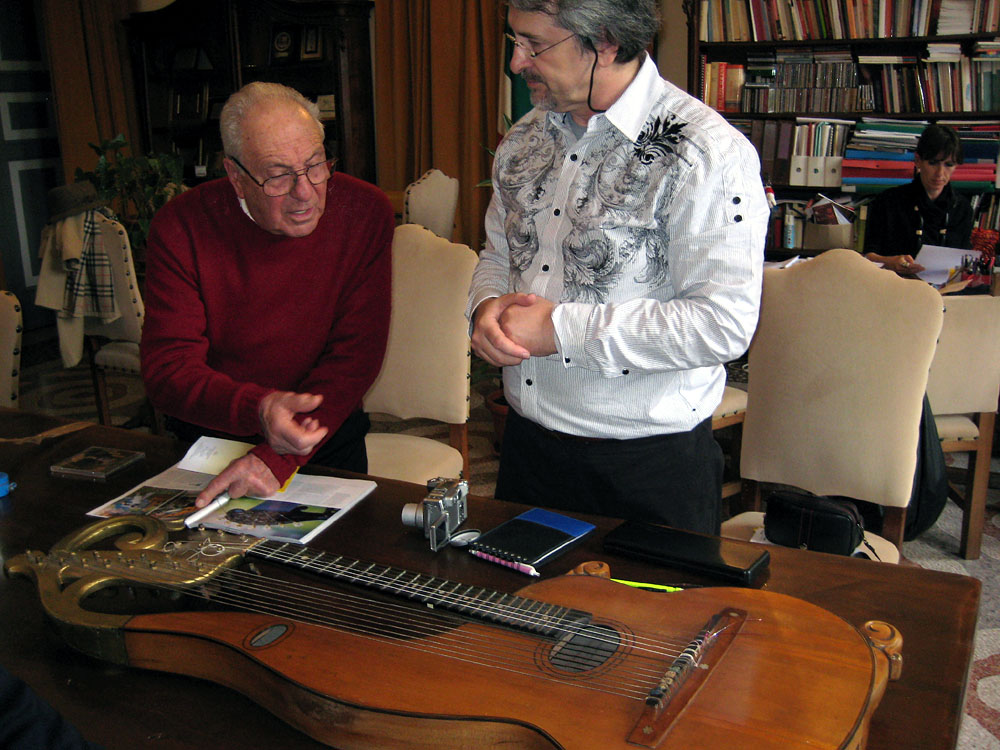
Franco and I compare the instrument to my own specimen (just published in the Spring Fretboard Journal, which I had along). Apparently, I have the only other surviving specimen similar to Taraffo’s own – Franco was wondering if mine was, in fact, “Taraffo’s natural wood headstock specimen.” No, the “leaves” in the carved extension did not match either of Taraffo’s guitars. Plus mine had “virgin” feet attachments (more below).
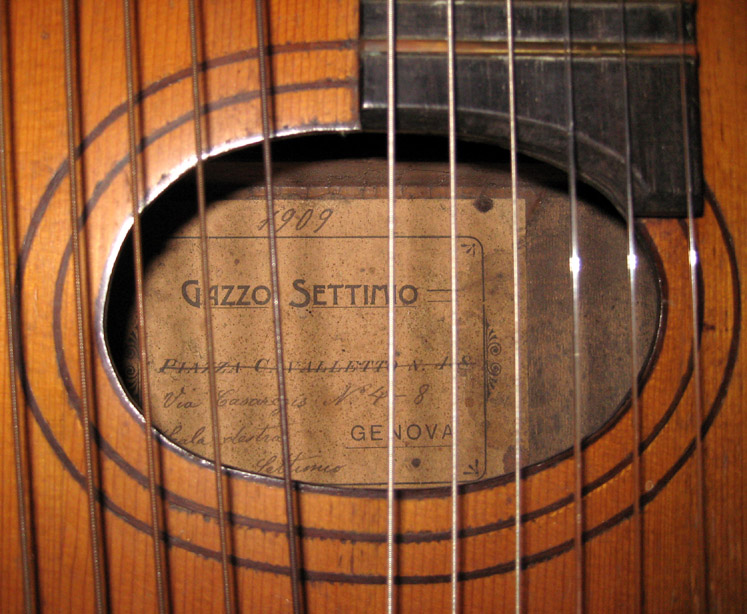
Franco and I had always assumed that Taraffo had 2 nearly identical instruments (the natural vs. gold headstocks and 1 different fretboard marker being the differences). The gold being the “later one” as it appeared after 1928/29 and was used until his death almost a decade later. Yet I was again reminded of the dated label on this instrument – 1909! Seems early, don’t you think?
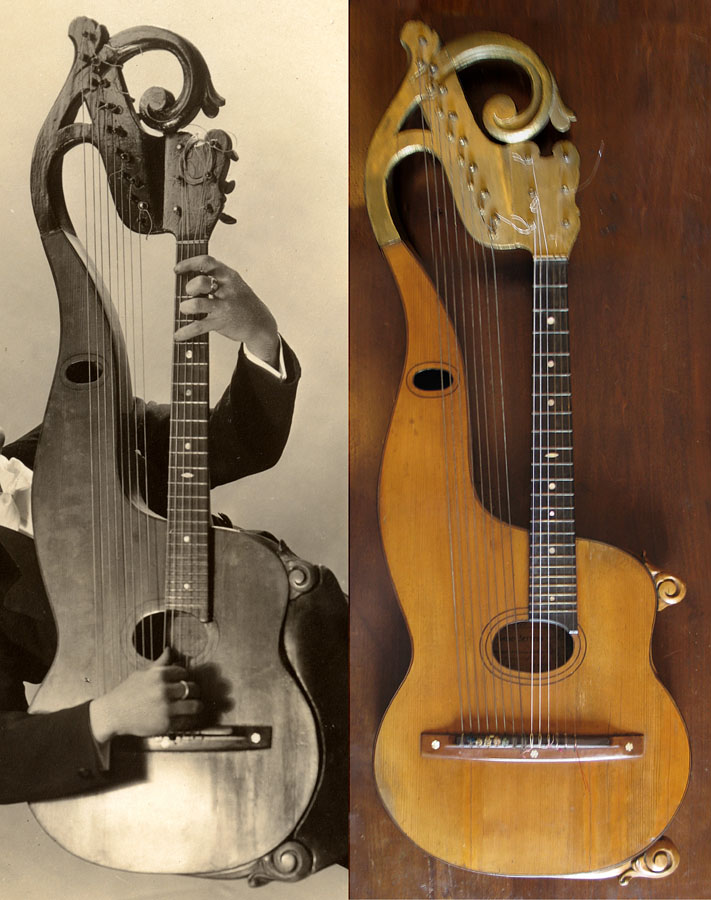
It would take Franco and me a lot more discussion and examination, but eventually (not that day) I convinced myself and then Franco that there was, in fact, only 1 instrument. What obviously happened (and not all uncommon) is that the frets and fingerboard wore out after 2 decades of playing, and someone (likely Gazzo again) installed a new fingerboard with the 9th & 10th fret marker positions swapped. Every other micro-detail is identical…except of course, for the gold…
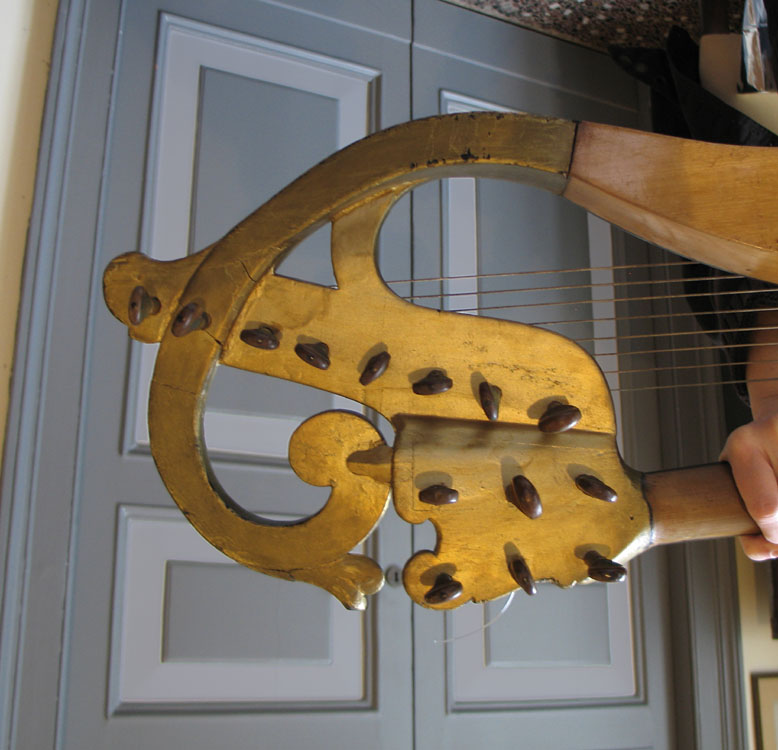
…which turned out not to be fancy gilding, but what appears to simply be cheap theatrical paint. The original – and very worn – wood (walnut?) headstocks were simply painted over!

The permanently attached feet were added to certain Gazzo instruments in order to mount them to a stand.
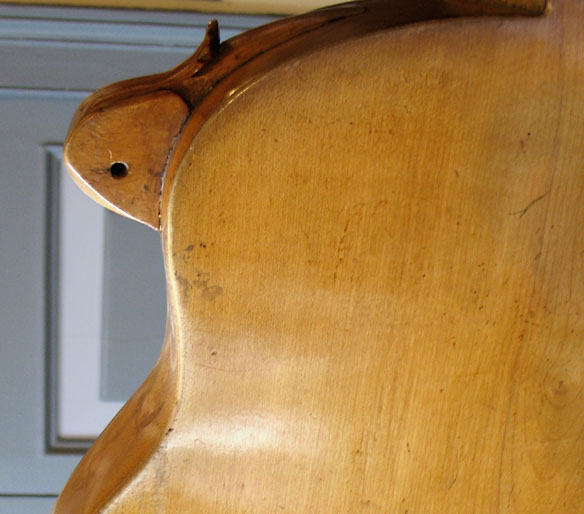
Like his brother Rinaldo’s instrument, Pasquale’s was simply drilled from behind and screwed to the stand. My own instrument had no holes, and, when I could not figure out how I was going to attach it to the stand I had built, I simply (and boldly!) drilled holes in them to bolt to my stand…and by dumb luck, I was historically accurate!

Another mystery was/is what kind of strings Taraffo used. The original neck strings were removed in the mid/late 1950s. Franco has believed they were steel, I’ve always insisted they were gut. It could even be that the answer lies somewhere in between. Here I am pointing out that the frets (now with about 8 years of playing wear) have some indentations on the low 3 strings, but none on the high 3 strings (indicating plain gut on top and metal-wound on the lower). I also measured the width of the slots in the nut, the high strings being extremely wide.
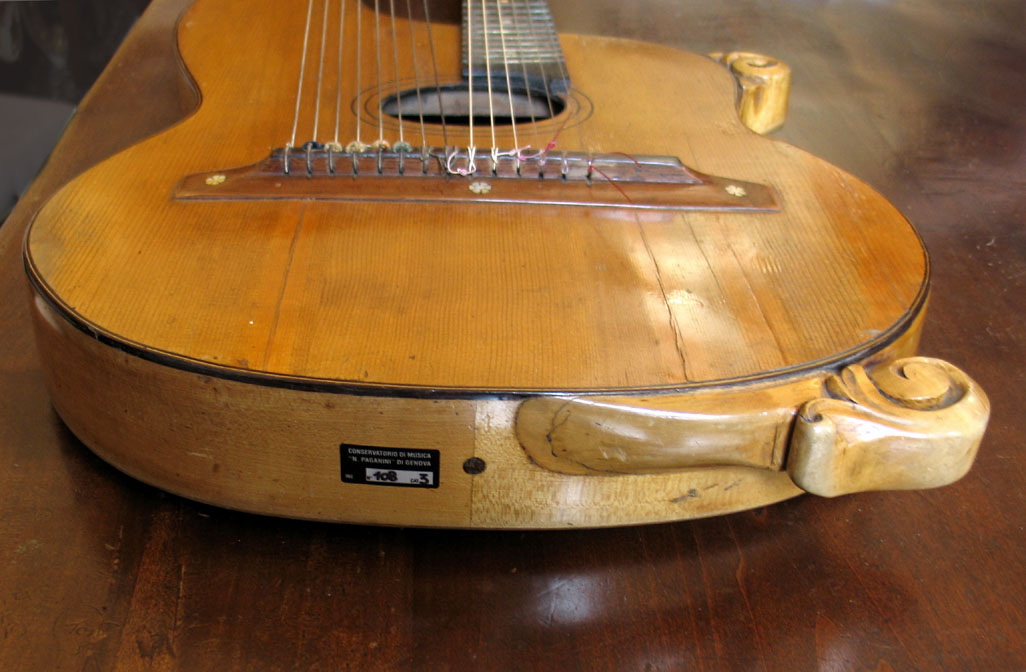

We haven’t yet identified the local wood used for the back and sides. Thoughts?
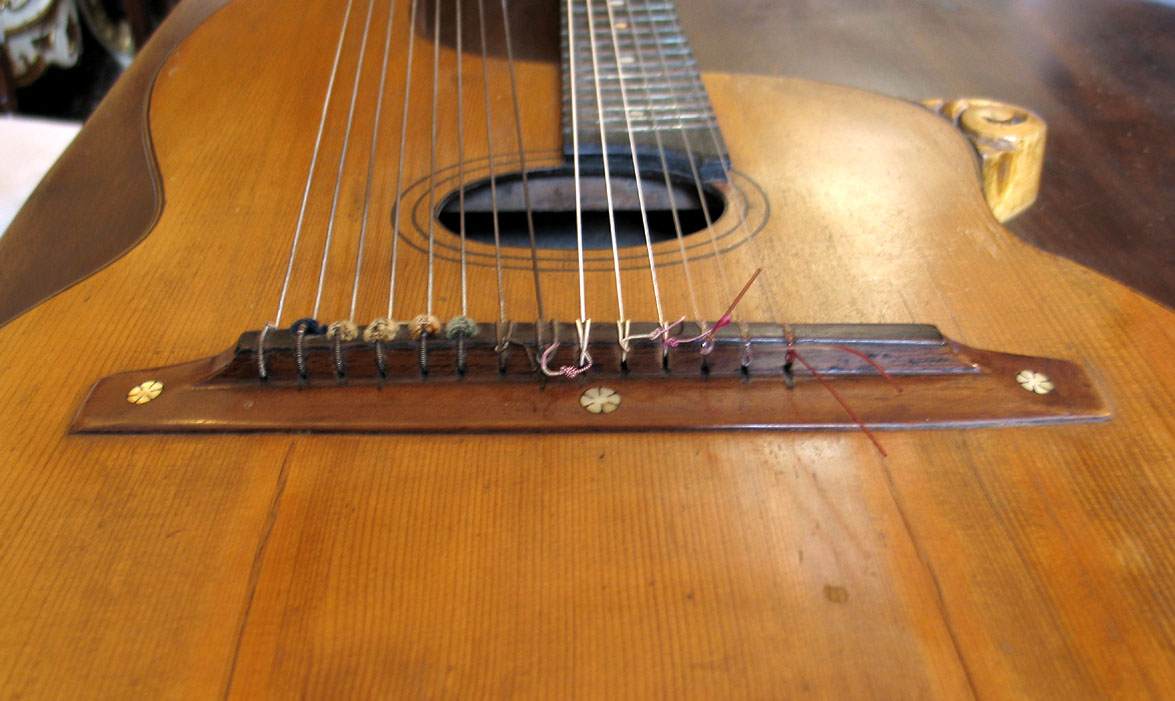
A view of the “lute-style” tie bridge – a strange (and crude) holdover from early guitars (Italian and otherwise).
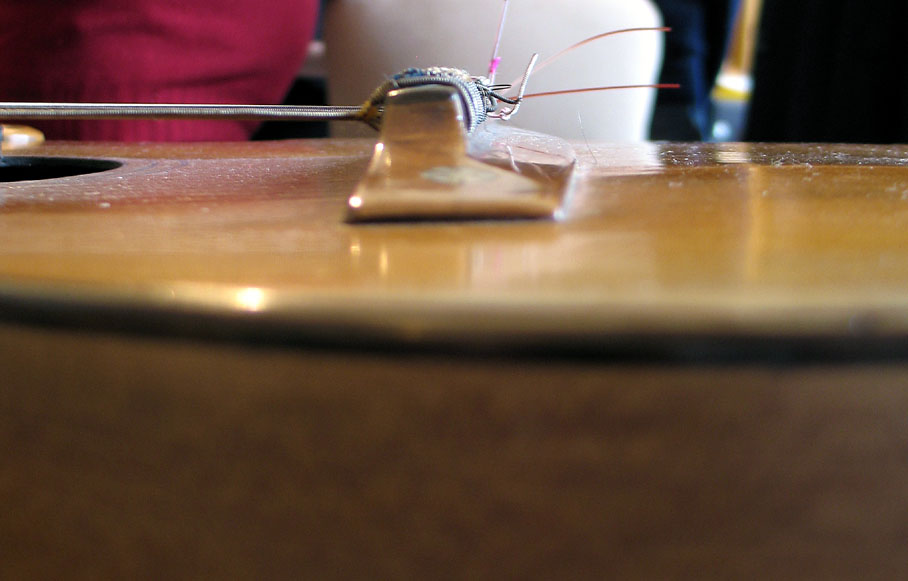
The loop point-of-contact gives a strange, bright sound that reminds me of a “Chorus pedal” effect. This instrument was not so severe as mine, which literally yields 2 notes a half step apart. Note how little bellying the top has – even with all Taraffo’s string tension!

String tension from silk and steel bass strings. But were these old-looking strings replaced?
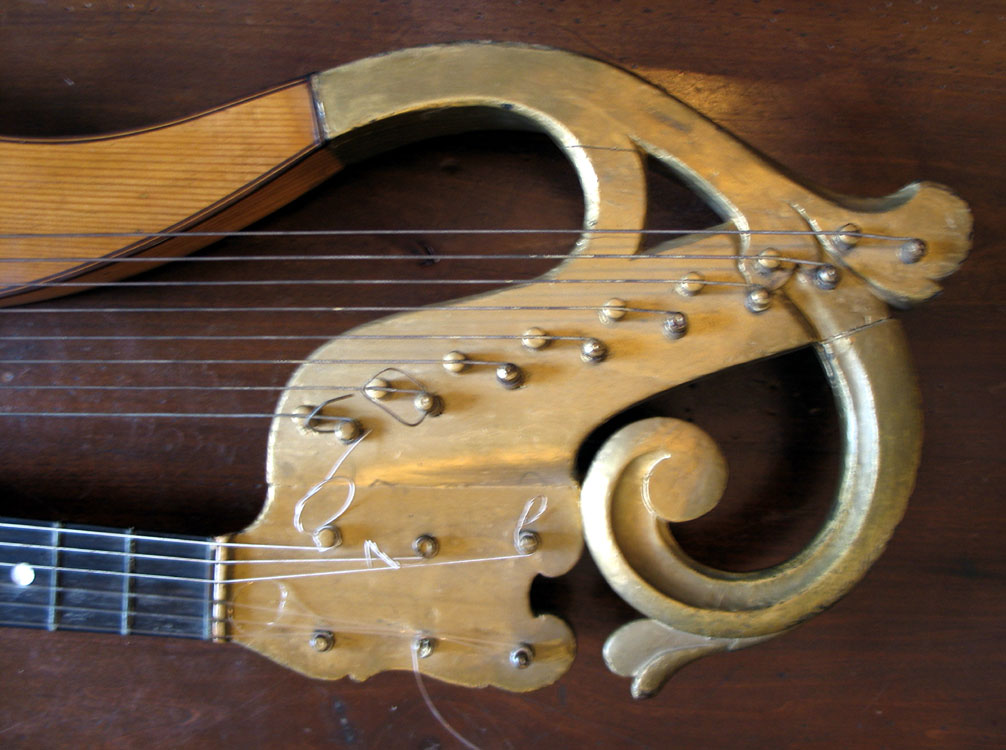
No – and we know this, because when they painted the headstocks, they painted right over the nut posts and tuners, with the strings still on! You can see the paint still on the bass strings around the nut areas. These strings were Taraffo’s own – unchanged not only since his last performance but almost certainly well before the transition of the natural to gold headstock treatment that photos date to 1928/1929! Talk about thrifty.
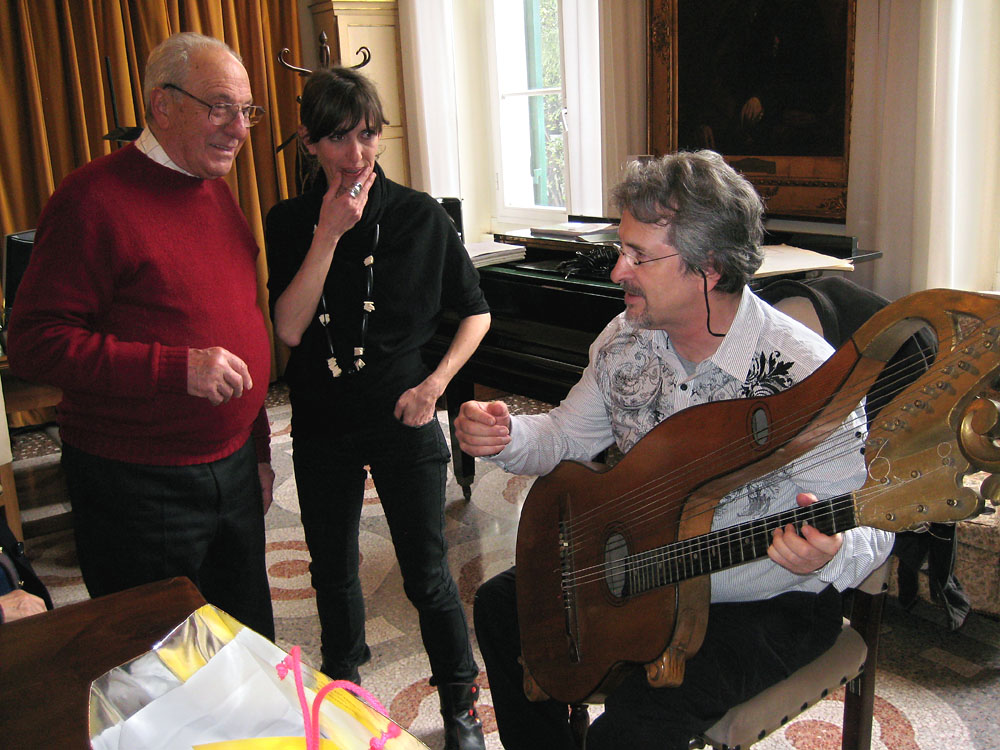
I was flabbergasted with many of our findings, and so were Franco and Conservatory Director, Ms. Conti.
So how was it to hold and play and hear the instrument of the greatest harp guitarist who ever lived?
Well, an emotional mix of magical and underwhelming. If anything, the quality of Taraffo’s Gazzo (being one of the first built) was even cruder than my own. The neck is wide, deep, and a bit challenging to play, and one cannot imagine how Taraffo got the volume out of it to fill the 1000-seat theaters he played in. With modern nylon strings, we can only guess at the original tone, but it was probably even more complex than the bright sound given off by the tied, loop-end strings. The basses still sounded surprisingly good, though too light for my touch (we can clearly see Taraffo digging into these on the video), and the gauges were not linear – as if he had used whatever he happened to have in his case when some of them broke. The greenish-gold paint presumably intended to “restore” and dress up a worn instrument was thoroughly charming and revealing of Taraffo’s theatricality and personality. As is the simple fact that Taraffo would remain loyal to his original benefactor, Settimio Gazzo, and play this comparatively crude and difficult instrument for his entire virtuoso career.
I wouldn’t have it any other way.

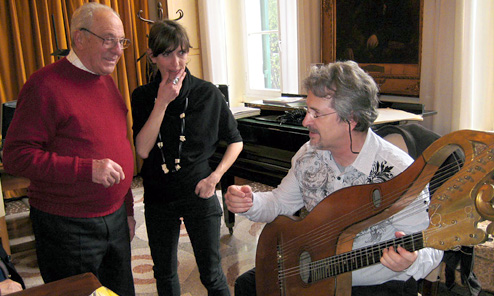
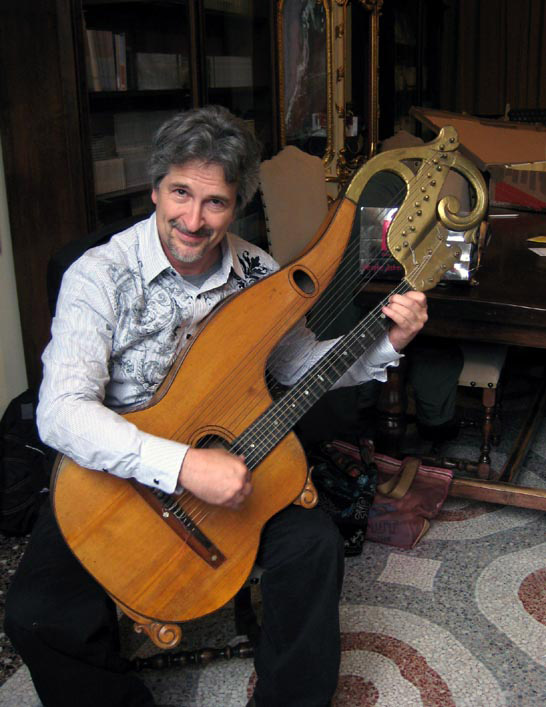
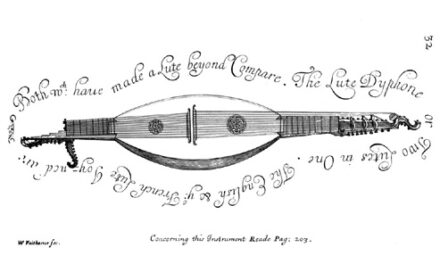
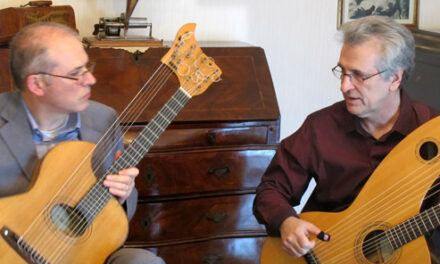
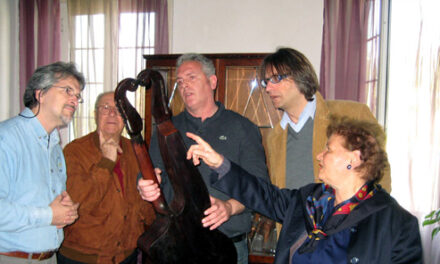
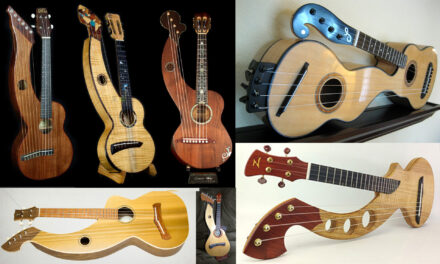
Gregg,
My nickel says the side wood is Sycamore, aka Lacewood.
Dan
Hi Gregg,
The photo isn’t that good for me to judge but the side wood looks similar to London Plane of the genus Platanus (I think in North America you call it Sycamore). Lots of European cities have these planted as road-side trees and so it could have been an available timber. Lovely instrument.